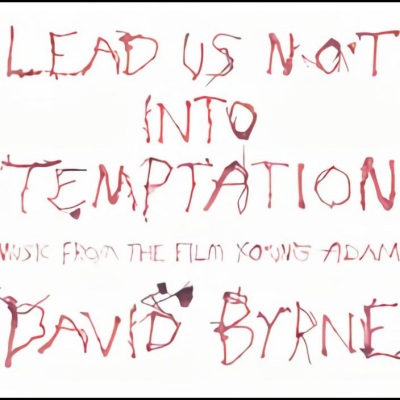
Lead Us Not into Temptation
by Sean Westergaard Lead Us Not into Temptation started as music for the film Young Adam, but has evolved to sit somewhere between a true soundtrack and a David Byrne solo album. Since the cast and director of Young Adam were all Scottish, and Byrne himself was born in Scotland, the choice of recording with young Scottish musicians (Belle & Sebastian, Mogwai) appealed to him from a conceptual standpoint, and after director David MacKenzie assembled a listening list, Byrne chose a group of musicians to work with. The end result is that Byrne leaves behind all the international rhythms that have dominated his solo work and turned in an album of moody, subtle beauty. Byrne sketched out some musical ideas to have a framework established, then worked with the Glaswegian musicians to elaborate on the sketches. Oftentimes, this was accomplished by Byrne giving the musicians a set choice of notes to be used on any given piece, but allowing the musicians themselves the decision of what notes to play and when (these sort of chance operations also play a part in both the music of John Cage and Brian Eno, among others). The music often echoes the gloom and dankness of the Scottish climate, sometimes mournful without being depressing or bleak, at other times tempered by a subdued optimism. Strings, piano, and Rhodes rise and fall in the mix, adding impetus to songs that could have too easily become static. Vocals appear only on the last two tracks: "Speechless," with its double-tracked, near unintelligible delivery, and the stately "Great Western Road." The only real departure from the basic mood of the album is a wonderful (albeit brief) arrangement of Mingus' "Haitian Fight Song" performed by the Hung Drawn Quintet. Lead Us Not into Temptation is somber and beautiful in a way listeners have not heard from David Byrne, and although he was probably pushed in this direction by the nature of the project, the fact is that this is one of the strongest albums of his solo career.
